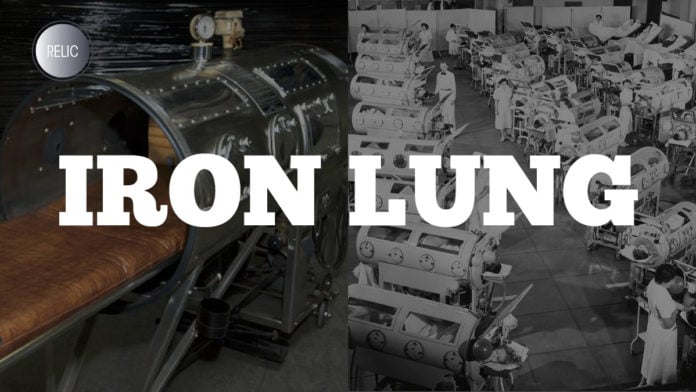During the COVID-19 pandemic, technology has had to advance at rates never seen before. One of the first big leaps in technology followed the flu pandemic a century earlier, which forced great leaps in technology in sanitation and healthcare. The iron lung, which is surprisingly making a comeback in modern medicine during the current COVID-19 pandemic, was one of the first giant leaps in technology when it came to another disease that humans had to face not too long ago: polio. Most famously, United States President Franklin D. Roosevelt suffered from polio.
The iron lung as we know it had its roots in England. John Mayow, a scientist living in 17th-century England, came up with the idea of external negative pressure ventilation
in 1670. Mammals such as humans already breathe through negative pressure breathing in which the rib cage expands and the diaphragm contracts to expand the chest cavity. Mayow built a model consisting of bellows and a bladder to pull in and expel air.
The first negative pressure ventilator was described over a century and a half later,
in 1832, by John Dalziel who put in place the concept of the modern iron lung. Other developments were being made in Europe and South Africa, such as Dr. Woillez’s Spirophore in 1876, and a wooden version of the iron lung specifically designed to treat
polio by Dr. Stueart of South Africa in 1918.
The iron lung itself as we know it was developed by Philip Drinker and Louis Agassiz Shaw, Jr., two professors at the Harvard School of Public Health, in 1928. The iron lung was known as the “Drinker respirator” and was clinically used for the first time at the Boston Children’s Hospital in Boston, Massachusetts, the same year. The machine was powered using an electric motor with air pumps from two vacuum cleaners, changing the pressure inside of a rectangular, airtight metal box that pulled air in and out of the lungs. The patient was an eight-year-old girl who almost died of respiratory failure due to polio, and she recovered within less than a minute of using the iron lung.
Warren E. Collins began producing the iron lung in 1928 for use in hospitals, originally for those poisoned by coal gas. It became popularly used for respiratory failure caused by polio. Others began to make variations of the iron lung, such as Danish physiologist August Krogh, who even used a water-powered motor using water from the
city’s pipelines. Krogh also made an infant respirator version of the iron lung.
By 1931, John Haven Emerson made important upgrades to the iron lung: a removable bed and portal windows that allowed attendants to reach in and adjust limbs, sheets, or hot packs. Drinker and Harvard University sued Emerson for his improvements to the device; Emerson said that such lifesaving technology should be available to all. Emerson also pointed out that Drinker’s patents were already published or used by others previously. Emerson won the case, and Drinker’s patents were then declared
invalid, making the iron lung more accessible to others. The technology spread to Europe and Australia and inventors in both regions made improvements to the device.
By the 1950s, polio had been virtually eradicated by the polio vaccine, thus drastically reducing the need for the iron lung. Between 1988 to 2001, new polio cases were reduced by 99.9%. Currently, polio only spreads in the wild between Afghanistan and
Pakistan. By the turn of the century, less than 100 individuals still used an iron lung in the United States. This number is reportedly in the single digits as of 2017.
Words by Jose Alvarez
Also published in Gadgets Magazine March 2021 Issue
